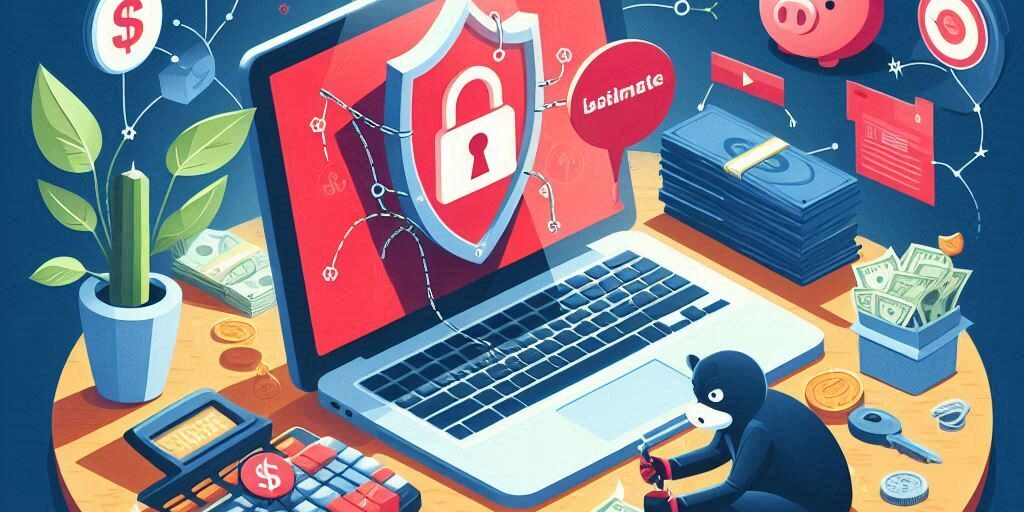Online banking security is essential in today’s digital world. With the increasing reliance on online banking, it’s important to understand the risks posed by malware and how you can protect your financial information from cyber threats. This guide will help you stay safe while banking online, providing tips on how to avoid malware and secure your sensitive data.”
This way, the focus keyword “online banking security” appears right at the start of your content, optimizing it for SEO.
This guide will provide you with practical tips on maintaining online banking safety from malware, including strategies to protect your banking information from malicious attacks.
Understanding Malware and Its Impact on Online Banking
Before we dive into the best practices for protecting banking online from malware, it’s important to understand how malware operates and the different types that specifically target online banking.Malware refers to malicious software designed to infiltrate your devices, steal sensitive data, or perform harmful actions without your consent.Once infected, malware can access login details, account numbers, and passwords, leading to identity theft, fraud, or unauthorised transactions.
Common Types of Malware Affecting Bank Accounts
1. Keyloggers
These programs record every keystroke, capturing login details and sensitive information.
2. Phishing Attacks
Attackers impersonate trusted entities to trick you into revealing personal or financial information.
3. Trojans
These disguise themselves as legitimate files or software but allow attackers remote access to your device.
4. Ransomware
Ransomware encrypts your files and demands payment to restore access, often targeting financial files and banking apps.
How Malware Infects Your Devices and Bank Account
1. Email Attachments and Links
Malicious emails may contain infected links or attachments. Always verify the sender before clicking.
2. Compromised Websites
Infected sites can automatically download malware. Stick to secure, trusted websites.
3. Infected Downloads
Downloading from unreliable sources may introduce malware. Only use reputable platforms.
4. Public Wi-Fi Networks
Unsecured networks can expose your data to hackers. Use a VPN for added security.
Practical Tips to Secure Your Bank Account from Malware
Here are strategies to protect your online banking from malware:
1. Change Your Bank Account Password Immediately
Act swiftly if you suspect an issue. Update your password to lock out unauthorised users.
2. Enable Two-Factor Authentication (2FA)
This adds an extra security layer, requiring both a password and a one-time code.
3. Set Up Account Alerts
Receive instant notifications of suspicious activities via email or SMS.
4. Use Strong, Unique Passwords
Avoid simple passwords. Use a combination of letters, numbers, and symbols. Consider a password manager.
Recognising Signs of Bank Fraud Caused by Malware
1. Unusual Transactions
Check for unknown transactions and report them to your bank immediately.
2. Account Access from Unknown Locations
Monitor logins from unfamiliar devices or locations and alert your bank.
3. Unexpected Password Changes
If your password changes without your knowledge, act quickly to secure your account.
Best Practices for Preventing Malware Attacks
If you suspect that your bank account has been compromised by malware, it’s important to act quickly and follow these essential steps to mitigate the damage and secure your account.
1. Keep Your Software Up to Date
Regular updates fix vulnerabilities that malware might exploit.
2. Install Anti-Malware Software
Use reputable programs to detect and remove malicious threats.
3. Avoid Clicking on Suspicious Links
Be cautious of unsolicited emails or messages containing links.
4. Use a Virtual Private Network (VPN)
Encrypt your internet connection when using public Wi-Fi.
Tools and Software to Help Protect Your Bank Account
1. Anti-Malware Software
Programs like Malwarebytes and Norton offer real-time protection against threats.
2. Password Managers
Securely store and generate strong passwords with tools like LastPass or 1Password.
3. Two-Factor Authentication Apps
Apps like Google Authenticator provide extra security through one-time codes.
How to Respond If Your Bank Account Is Compromised
1. Contact Your Bank
Report suspicious activity immediately and request account assistance.
2. Change Your Passwords
Update your passwords across all accounts to prevent further access.
3. Monitor Your Account
Keep an eye on your transactions and request a fraud alert on your credit file if needed.
Conclusion
Protecting your online banking from malware requires a multi-faceted approach, including secure browsers, trusted devices, secure networks, and the right tools. By following these practices, you can significantly reduce the risk of falling victim to cybercriminals and enjoy a safe online banking experience. Always prioritize your cybersecurity to ensure your sensitive banking information remains protected from malware and other online threats.




